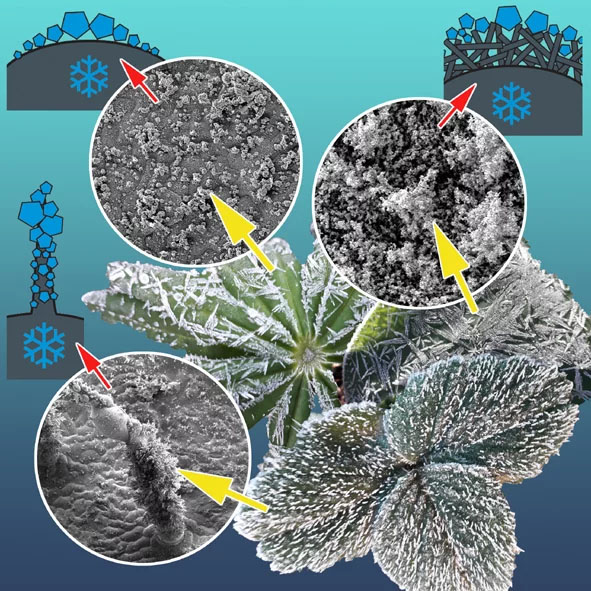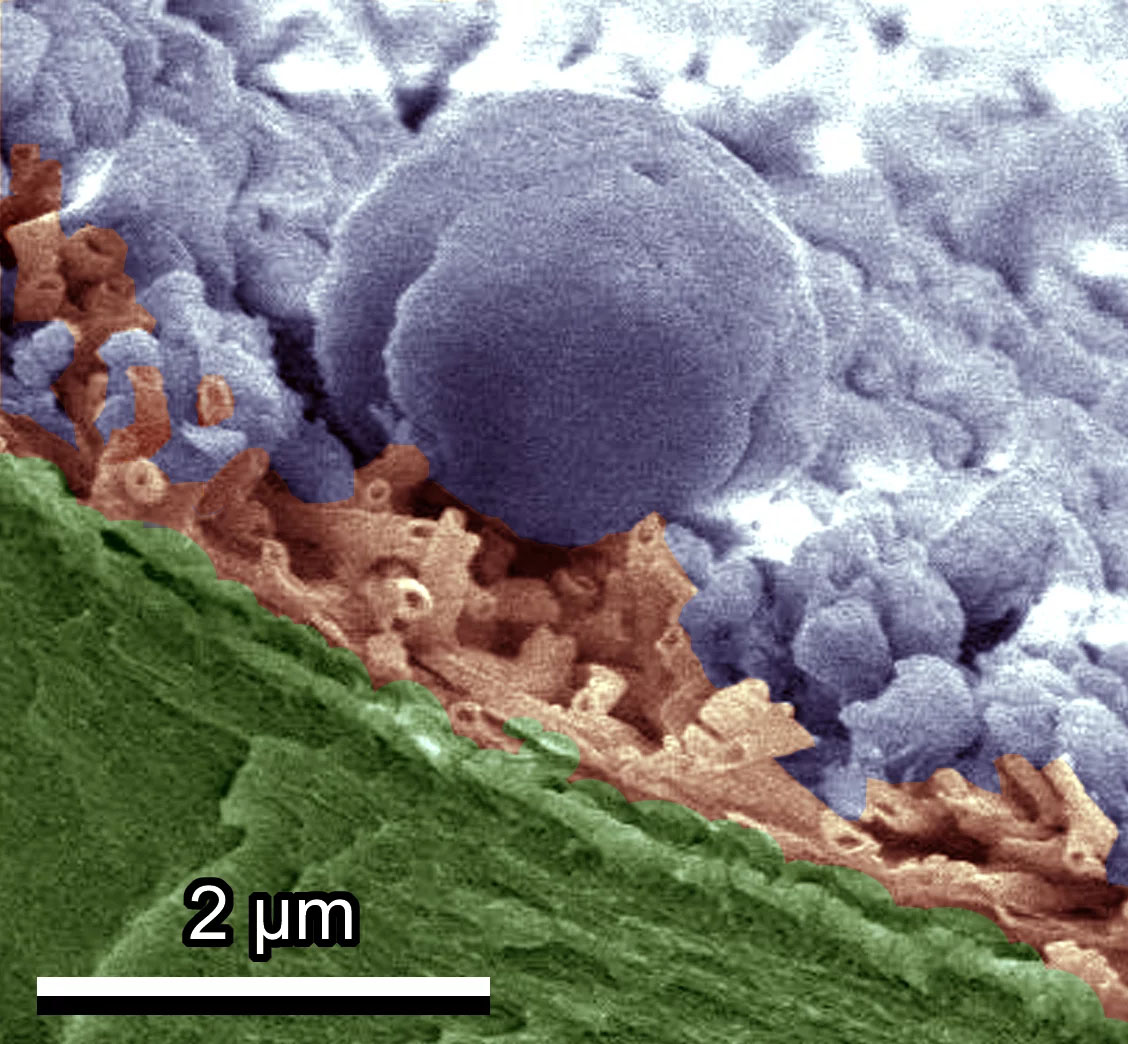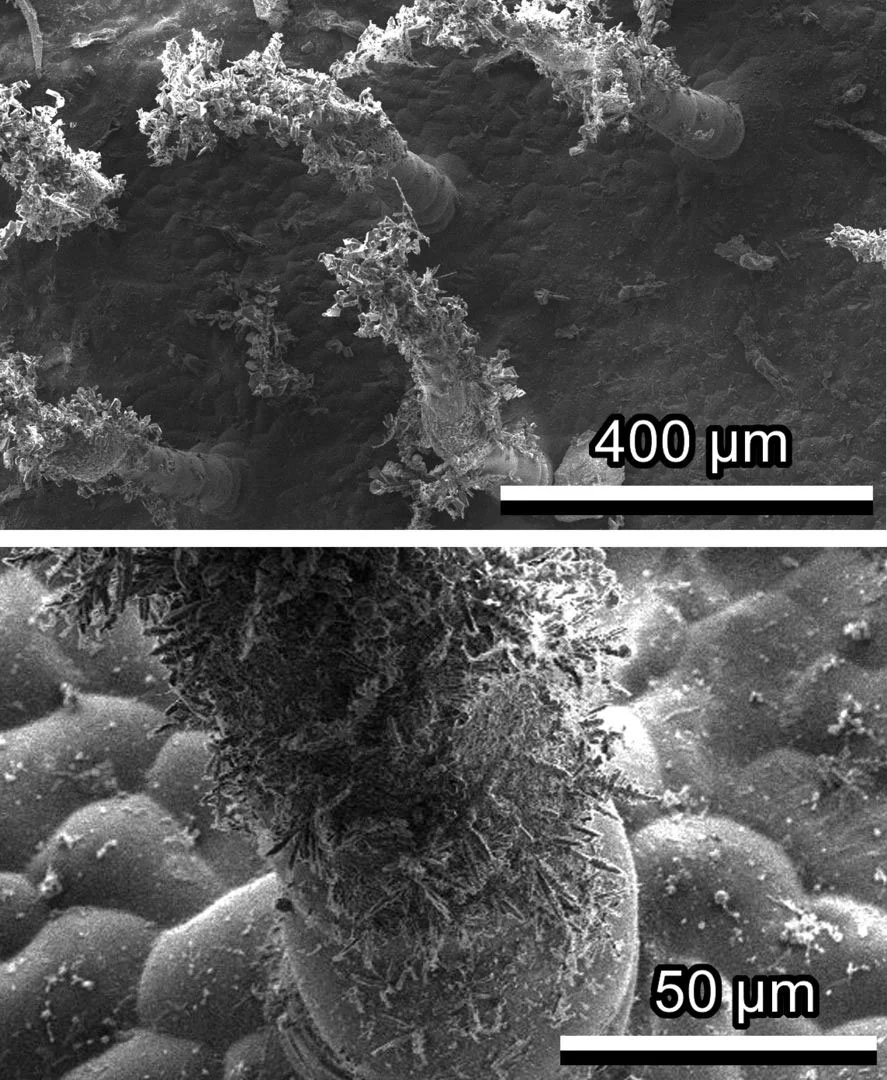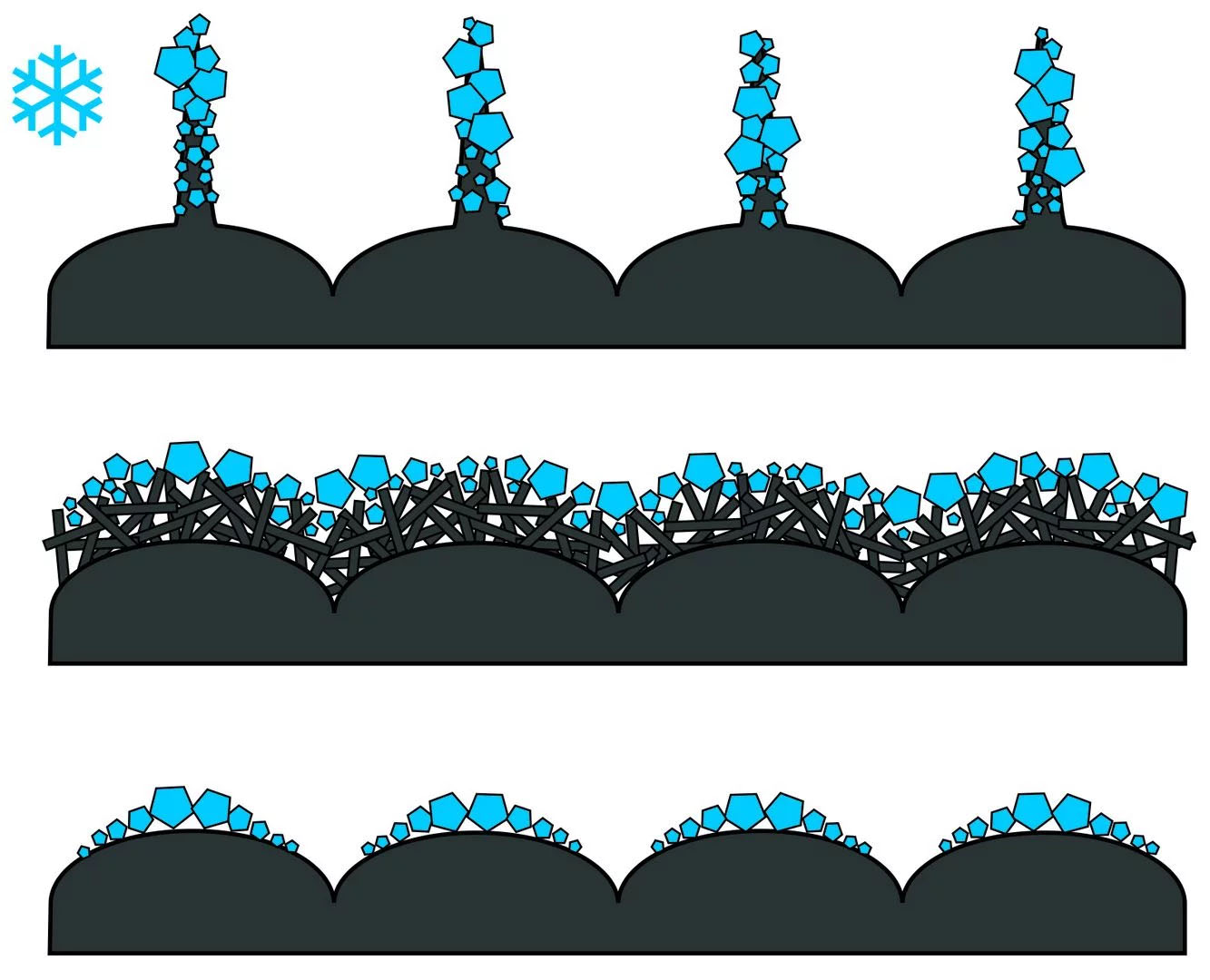| Jan 26, 2023 |
Inspiration for artificial anti-icing surfaces
(Nanowerk News) When environmental temperatures go below zero, ice crystals are formed on many leaves of evergreen plants. Nevertheless, they usually survive frost phases unharmed. Using a special cryo-scanning electron microscope, researchers from the Zoological Institute of Christian-Albrechts-Universität zu Kiel (CAU) were able to take high-resolution images of icing processes on surfaces of plants native to Germany and Antarctica at the micro- and nanoscales for the first time. In the process, they discovered various tiny structures on the leaf surfaces with which the plants protect themselves against low temperatures. A better understanding of these protective strategies could also be interesting for the protection of crops or artificial surfaces such as airplanes.
|
|
The results were published in the scientific journal The Science of Nature ("Anti-icing strategies of plant surfaces: the ice formation on leaves visualized by Cryo-SEM experiments").
|
 |
| The collage illustrate the different types of plant leaves and their protection against icing (clockwise, starting below left): Trichomes, a smooth surface, and a wax layer. (Image: Elena Gorb and Stanislav Gorb)
|
Inspiration for artificial anti-icing surfaces
|
|
Airplanes are treated with special liquids or are built with heatable surfaces to protect them from icing. Science and industry worldwide are investigating suitable coatings for aviation. "However, many of our wild plants have developed their own natural protection against icing over the course of evolution," explains Professor Stanislav Gorb, head of the research group Functional Morphology and Biomechanics. For more than 20 years, the zoologist has been studying the surfaces of plants at CAU together with his wife Dr. Elena Gorb, a botanist by training.
|
|
To find out how plants protect themselves against icing, research has so far focused mainly on chemical processes in the cell of plants, such as sugar or other antifreeze content. The research team from Kiel has now been able to show that the surface structure of the leaves also has an important protective function at cold temperatures. For this purpose, the two researchers examined the formation of ice crystals on different types of leaves of native wild plants.
|
|
"We could show that fine hairs, so-called trichomes, or a waxy layer on the leaves are effective adaptations of plants to prevent or control icing directly on the leaf surface. If a layer of ice forms directly on the cuticle, the plant's cells will soon freeze as well," says Elena Gorb.
|
 |
| The coloured image from the cryo-scanning electron microscope shows the ice crystals (purple) that have formed on a tulip leaf. The waxy layer (brown) on the surface protects the leaf underneath (green). (Image: Stanislav Gorb)
|
Leaf surfaces developed different adaptations
|
|
Through investigations in nature and in the laboratory, the two researchers were able to identify different protective mechanisms on the leaves.
|
|
Plant leaves with trichomes, such as those of the daisy (Bellis perennis), are usually hydrophilic. Therefore ice crystals form first at their tips and as soon as the temperatures rise again, they also melt again quickly here. The sensitive leaf surface underneath remains ice-free and undamaged.
|
|
Leaf surfaces covered with 3D nanoscale wax projections, such as those of some tulip species (Tulipa gesneriana), on the other hand, are superhydrophobic: Water drops roll off immediately, also known as the "lotus effect". Ice crystals can only form here if water molecules are stopped by defects in the wax layer. But even then they do not damage the wax layer and the leaf underneath remains intact.
|
|
The scientists found the anti-icing wax strategy of plants not only in Germany, but also at the Antarctic Circle: Deschampsia antarctica, one of the only two flowering plants native to Antarctica, even has a double protection with a prominent epicuticular wax coverage consisting of two superimposed layers on both leaf sides.
|
 |
| Ice crystals only form on the fine trichomes on the leaves of the daisy Bellis perennis. The leaf surface itself is not iced. (Image: Stanislav Gorb)
|
|
The researchers suppose in another recent publication in Beilstein Journal of Nanotechnology ("Hierachical epicuticular wax coverage on leaves of Deschampsia antarctica as a possible adaptation to severe environmental conditions") that the two-layered wax might contribute even more to the plant adaptation to severe environmental conditions in Antarctica due to an increase of its resistance against cold temperatures, icing, harmful UV radiation, and dehydration.
|
|
Plants with relatively smooth leaves such as the cherry laurel (Prunus laurocerasus) are the least protected at first glance: Ice crystals can form all over the surface. When exposed to sunlight, the meltwater accumulates in lower-lying areas of the leaf. When temperatures drop again, these "puddles" freeze and can cause lasting damage to the plant’s cells. "But since such plants survive the winter, we think they have sufficient chemical antifreeze protection," Stanislav Gorb suspects.
|
Cryo-microscope enables images at minus 140 degrees
|
|
The team was only able to study the nanoscale ice crystals with a cryo-scanning electron microscope. In contrast to other methods, biological samples are not dried here but frozen very quickly. This preserves their structures quite well and allows them to be studied in an almost original state. To do this, the scientists froze the leaves by briefly dipping the leaves in liquid nitrogen at minus 196 degrees. In the microscope, which had been cooled down to minus 140 degrees, high-resolution images of the resulting ice crystals could now be taken. At room temperature, the ice crystals melt again and the process can be repeated. In this way, an intermediate melting in nature like during the day by sunlight can be imitated.
|
 |
| The schematic illustration shows the different formation of ice crystals on a leaf with trichomes (top), a leaf covered by nanoscale 3D wax projections (middle) and an almost smooth, unprotected leaf (bottom). (Image: Elena Gorb)
|
|
"Ultimately, plants have developed many ways to protect themselves from the cold in the course of evolution," Stanislav Gorb summarises. Especially the interactions with water on the leaf surface promise exciting insights, also for the development of technical 'anti-icing' surfaces. "But we still know very little about these processes."
|




